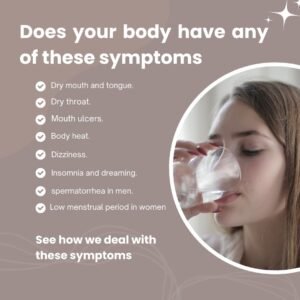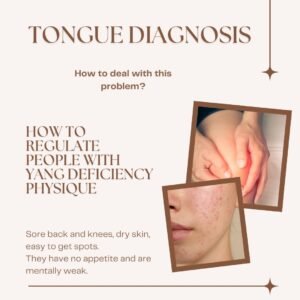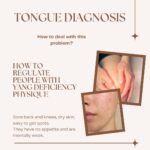In Traditional Chinese Medicine (TCM), tongue diagnosis is one of the key methods for assessing overall health. By observing the color, shape, and coating of the tongue, practitioners can gain insights into internal imbalances and disease patterns. A crucial aspect of TCM tongue diagnosis is “looking at the coating color,” which refers to the color of the tongue coating. The color of the coating can reflect different pathological conditions in the body. The primary coating colors observed are white, yellow, gray, and black—these are common indicators used in TCM to understand a person’s health.
Table of Contents
一. White Coating
When the tongue coating appears white, it is referred to as “white coating.” In Traditional Chinese Medicine (TCM) tongue diagnosis, white coating can vary in thickness, and is commonly associated with exterior or cold conditions. It is frequently observed in conditions like wind-cold or wind-damp invasion, as well as yang deficiency with internal cold. The thickness, moisture, and texture of the coating can help determine the severity of wind-cold invasions and whether body fluids are affected. Depending on the quality and color of the coating, it may also indicate deficiency, cold, dampness, or heat, reflecting the depth and complexity of TCM tongue diagnosis.
1. Thin White Coating – Exterior Cold Syndrome

(IMAGE) – Thin white coating, which is relatively moist
When the tongue coating is thin and the tongue body is visible beneath it, it is referred to as thin white coating. In TCM tongue diagnosis, thin white coating is often associated with exterior conditions, cold syndromes, or deficiency. A tongue with thin white coating and a light red body is considered a normal tongue coating. If there are additional symptoms like aversion to wind or cold, this suggests an exterior wind-cold invasion. When the coating is thin, white, and moist, it may indicate external cold-dampness or yang deficiency in the spleen and kidneys, with cold-damp accumulation.
If the coating is thin, white, and dry, with a light red tongue, it suggests unresolved exterior syndrome and damage to the lung’s fluids. A thin white coating with a pale purple tongue may indicate internal cold due to yang deficiency and stagnation of qi and blood.
2. Thick White Coating – Excessive and Heat Syndromes

(IMAGE) – A thick layer of white coating on the tongue
In TCM tongue diagnosis, when the tongue coating is so thick that the tongue body is not visible beneath it, this is referred to as “thick white coating.” Thick white coating is typically associated with excess and heat conditions. The coating may be thick and slippery or greasy, indicating internal stagnation of dampness, phlegm, or cold-damp accumulation, or digestive stagnation.
When the thick white coating is dry, it may suggest a variety of internal diseases, most commonly gastric stagnation from undigested food. If it is associated with damp-heat conditions, it suggests that damp-heat has penetrated from the exterior to the interior, indicating the presence of internal damp-heat.
If the thick white coating is powdery and covers the entire tongue, it may indicate infectious diseases, abscesses, or other conditions where dampness and heat toxins have accumulated.
二. Yellow Coating
Yellow coating on the tongue is referred to as “yellow tongue coating.” In Traditional Chinese Medicine (TCM) tongue diagnosis, the yellow coating is categorized based on its intensity into light yellow, deep yellow, and scorched yellow coatings. The coating can also vary in thickness, moisture, and texture, ranging from dry to greasy. Yellow coating typically indicates interior conditions, excess conditions, or heat conditions, and is especially common in digestive heat disorders. The deeper the yellow, the more severe the heat. Yellow coating often appears alongside a red or crimson tongue.
1. Classification by Color

- Light Yellow Coating (also known as “Slight Yellow Coating”) – This often results from a transformation of thin white coating, indicating a shift from cold to heat.

- Deep Yellow Coating (also known as “True Yellow Coating”) – This coating is yellow and thick, suggesting the condition has progressed from exterior to interior, with the disease worsening or becoming chronic.

- Scorched Yellow Coating (also known as “Old Yellow Coating”) – This is a deep yellow coating with gray-black streaks, indicating strong stomach heat.
2. Classification by Thickness

- Thin Yellow Coating: The coating is thin and moist, suggesting mild internal heat that hasn’t yet harmed the body’s fluids. If the coating is slightly dry, it indicates that the heat is present but has already started to damage the fluids.

- Thick Yellow Coating: When the coating is thick and moist, it suggests internal accumulation of damp-heat. If it is thick and dry, it points to intense heat that has caused significant fluid loss. If the coating is cracked and dry, resembling “scorched rice,” it indicates extreme heat that has severely damaged fluids. If the coating is thick and greasy, like egg yolk, it suggests damp-heat accumulation or the transformation of phlegm into heat, or the fermentation of food into heat.
三. Gray Coating
Gray coating typically indicates interior conditions and can be further categorized into cold or heat types. It is commonly seen in internal heat disorders or cold-damp conditions. Gray coating often evolves from white coating, which darkens, or it can appear together with yellow coating. It is frequently observed in patients with chronic conditions, such as chronic gastritis, gastric and duodenal ulcers, or chronic hepatitis. In TCM tongue diagnosis, gray coating not only reflects the nature of the illness but also reveals imbalances in the body’s yin and yang.
1. Gray Coating with Slippery Texture – Internal Dampness and Obstruction

(IMAGE) – Bitter, slippery, greasy coating, with accompanying white coating
This type of coating is characterized by the internal stagnation of dampness and phlegm. It typically appears in symptoms that lean toward cold, such as body heaviness and a lack of thirst.
Tongue Features: White coating gradually turns into gray coating, which is slippery, greasy, and accompanied by white coating. When both gray and white coatings appear together, it is referred to as “gray-white coating.”
Main Condition: This tongue appearance suggests deficiency, internal dampness, or phlegm accumulation.
2. Gray Coating with Dryness – Excess Damp-Heat Syndrome

(IMAGE) – Gray coating that is dry, with a yellowish bitterness
This coating is often seen in cases of intense heat injuring fluids, such as in exterior heat conditions, or when yin deficiency leads to internal heat.
Tongue Features: Yellow coating gradually turns into gray coating, which is dry and may be combined with yellow coating. When both gray and yellow appear together, it is referred to as “gray-yellow coating.”
Main Condition: This tongue appearance suggests excess conditions with damp-heat, commonly accompanied by symptoms like dry mouth, thirst, constipation, irritability, and fever typical of heat-related illnesses.
四. Black Coating
Black coating generally develops from scorched yellow or gray coating, and its formation is similar to that of gray coating. In Traditional Chinese Medicine (TCM) tongue diagnosis, black coating is often seen in the severe stages of an illness and can appear in various conditions, including cold, heat, deficiency, and excess. It is associated with internal, severe conditions. Typically, the darker the black, the more severe the illness. Additionally, distinguishing between moist and dry coatings on the tongue is important for diagnosis.
1. Thick and Greasy Black Coating – Mixed Cold and Heat

(IMAGE) – Black, thick, and greasy coating
This type of coating indicates the presence of both cold and heat in the body. Conditions with mixed cold and heat, such as cold in the intestines combined with heat in the liver and gallbladder, often present with this coating.
Tongue Features: The tongue body is red and tender, with a thick, greasy black coating.
Main Condition: This tongue appearance suggests mixed cold and heat conditions, commonly seen in chronic kidney inflammation, chronic gastritis, etc.
2. Dry Black Coating – Excessive Heat Injuring Fluids

(IMAGE) – Black, dry coating
This coating occurs when long-term internal heat has drained bodily fluids, leading to decreased moisture. The tongue itself is red or deep red, and sometimes the tip of the tongue may have red spots or small raised dots. This type of coating is often seen in patients with chronic illnesses or inflammation.
Tongue Features: The coating is black and dry, with the tongue body typically appearing red.
Main Condition: This tongue appearance suggests excessive heat that is injuring the body’s fluids.
Summary
By examining the tongue coating in TCM, we can accurately predict the body’s pathological state based on the color, thickness, and moisture of the coating. Different coatings, such as white, yellow, gray, and black, carry different diagnostic meanings. White coating is commonly associated with cold and deficiency conditions, yellow coating is linked to heat conditions, gray coating suggests internal dampness or damp-heat obstruction, and black coating indicates a severe illness. Understanding these changes in tongue appearance helps TCM practitioners assess the patient’s overall health and provides a foundation for treatment decisions.
More Articles in “Identification Tongue”:
- Tongue Sensation & Taste
- Tongue Shape
- Tongue Color
- Tongue Condition
- Tongue Coating
Subscribe now and enjoy 15% off your first purchase








